Could We Create A Bottomless Pit On Earth?
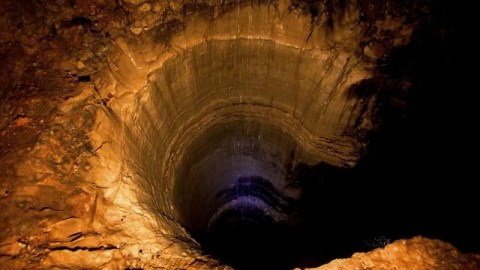
And if we did, what would happen if you fell in?
Out in the countryside of rural America, you can find all sorts of attractions that are too-good-to-be-true. One of the mostubiquitous sights are bottomless pits, which in reality usually only go down for tens of meters before actually hitting bottom. Despite recurring outlandish claims, these turn out to be nothing more than urban legends, or hoaxes, upon closer inspection.
It’s true that there are plenty of deep holes that exist, but none are truly bottomless. In reality, even the deepest ones have never penetrated all the way down below the Earth’s crust. To get something deeper, we’ll have to use our imagination. For a truly bottomless pit, we’d have to pretend there were somehow a cylindrical shaft that extended all the way down, past the Earth’s crust, mantle, and inner and outer cores, all the way to the center of the Earth, and then that continued back out to the other side, most probably into the ocean if you live on a continent.
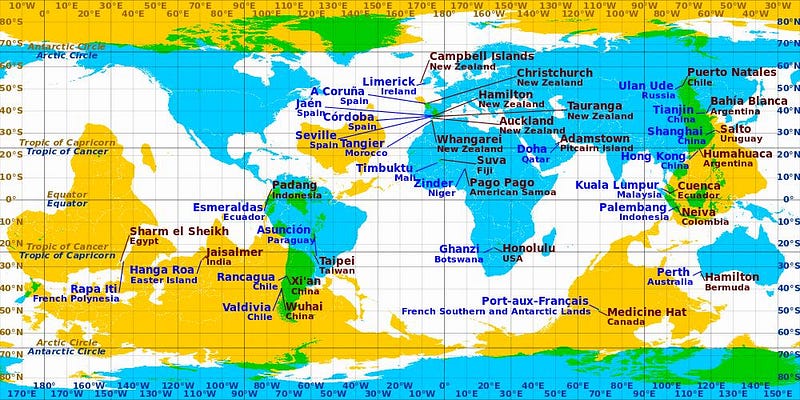
The corresponding point from your current location, if you were to drill straight through the Earth’s center and come out the other side, is known as an antipodal point. This requires a lot of imagination, because as you travel towards the Earth’s center, the temperatures and pressures begin to increase fantastically. The Earth’s outer core becomes liquid and molten, and the inner core is highly radioactive, with temperatures in excess of 4000 °F (2200 °C). This is so spectacularly hot that it would literally melt, boil or sublimate practically any known materials.

So what we’ll need to create is something that will stabilize your cylindrical shaft going right through the Earth’s center. Graphene, a particular form of carbon bound together, might be an excellent candidate, as it’s harder and more difficult to break than even diamonds. Graphene can be created in the form of carbon nanotubes, which themselves are hollow on the inside. This could be created to not only line the walls of your bottomless pit, but if you can sufficiently cool them, they’ll be capable of holding back the interior layers of the Earth. Pumping and circulating an ultra-cold liquid through a graphene nanotube, like liquid helium, just might do the trick.
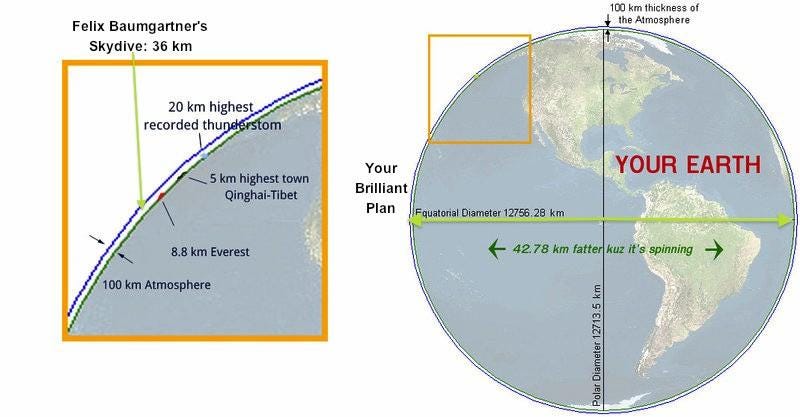
If you can create a stable tunnel all the way through the Earth, you will have created a true bottomless pit. A journey through this pit would make the world’s longest skydive look like a paltry coin-toss. While Felix Baumgartner may have journeyed 36 kilometers, a journey through a bottomless pit would take you more than 12,000 km, all the way from one side of the Earth to the other. Only, if you jumped like a skydiver, whether with or without a parachute, you wouldn’t get very far along your journey.
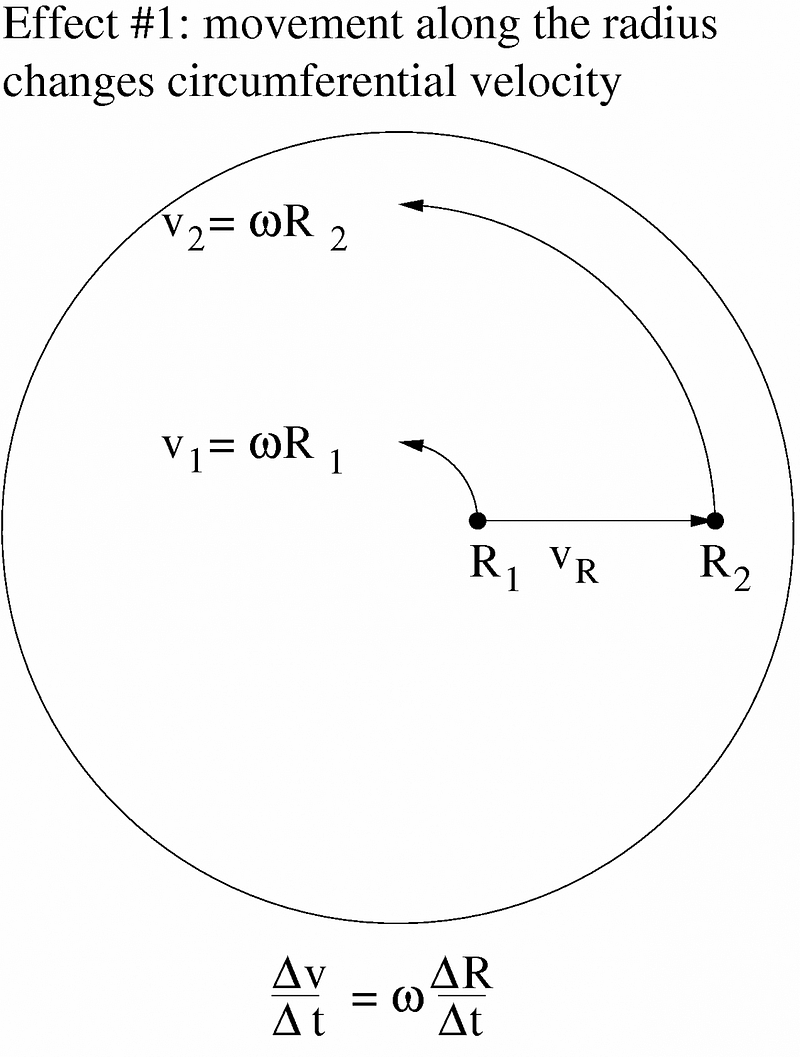
Here, near the surface of the Earth, the atmosphere is moving along with you and the Earth’s surface as the planet rotates, at a clip of about 1000 kilometers-per-hour, with variations depending on your latitude. This isn’t a big deal for most normal applications, but as you start moving away from the surface of the Earth’s crust and deep into the interior, you’ll find that, horizontally, you’re moving too quickly. The entire Earth rotates with the same angular velocity, but like a record spinning on a turntable, the interior parts have a lower linear velocity than the outer parts, meaning someone falling through the Earth would inevitably run into the sides.
It’s only a matter of time (and, surprisingly, a few dozen kilometers) before you find that you’ve smashed into the wall of your cylindrical tube, since the Earth is still rotating — with the interior rotating more slowly than the surface — after you jump. There’s a workaround, however, if you’re clever.
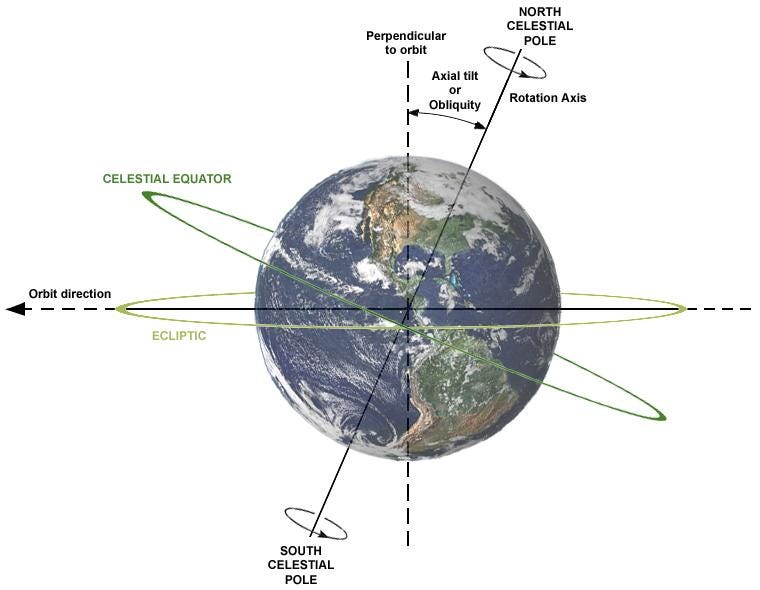
Build your shaft directly along the Earth’s rotation axis, from the North Pole through the center of the Earth all the way out at the South Pole. Now, there will be no effects from differential rotation, no coriolis forces, and — so long as your cylindrical tube holds — nothing keeping you from having a true-to-life bottomless pit! So do it — jump into the bottomless pit — and what happens?
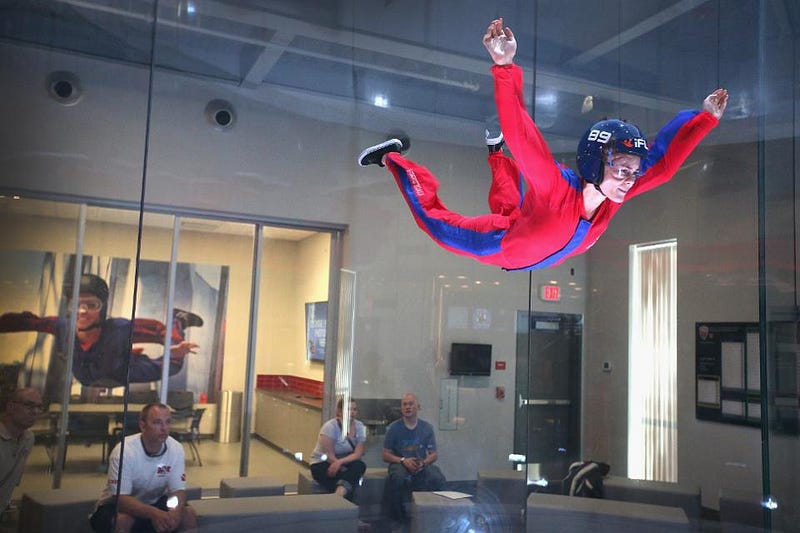
You’ll start accelerating downwards as the air rushes by. Pretty quickly — after about 7 seconds — you hit terminal velocity, which is about 140-to-210 miles-per-hour, depending on how your arms and legs are positioned. This speed actually increases marginally for a while as you continue down the shaft, as the inner layers of the Earth are denser than the outer layers.
But then the gravitational pull will get weaker, as most of the mass of the Earth is outside you, rather than beneath you. Simultaneously, the density of air filling the shaft will get larger, meaning that you’ll slow down tremendously. The fall, thanks to air resistance, will take a long time: somewhere around 20-to-24 hours to reach the Earth’s center. This is a long journey of around 4,000 miles (or 6,400 km). When you arrive in the center, you’ll be moving at a paltry speed of only around 30 miles-per-hour (or 48 km/hr), dependent on the density of air in the shaft, and you’ll only overshoot the true gravitational center by less than a single mile. In just another few minutes, you’ll find yourself gravitationally trapped at the Earth’s center.
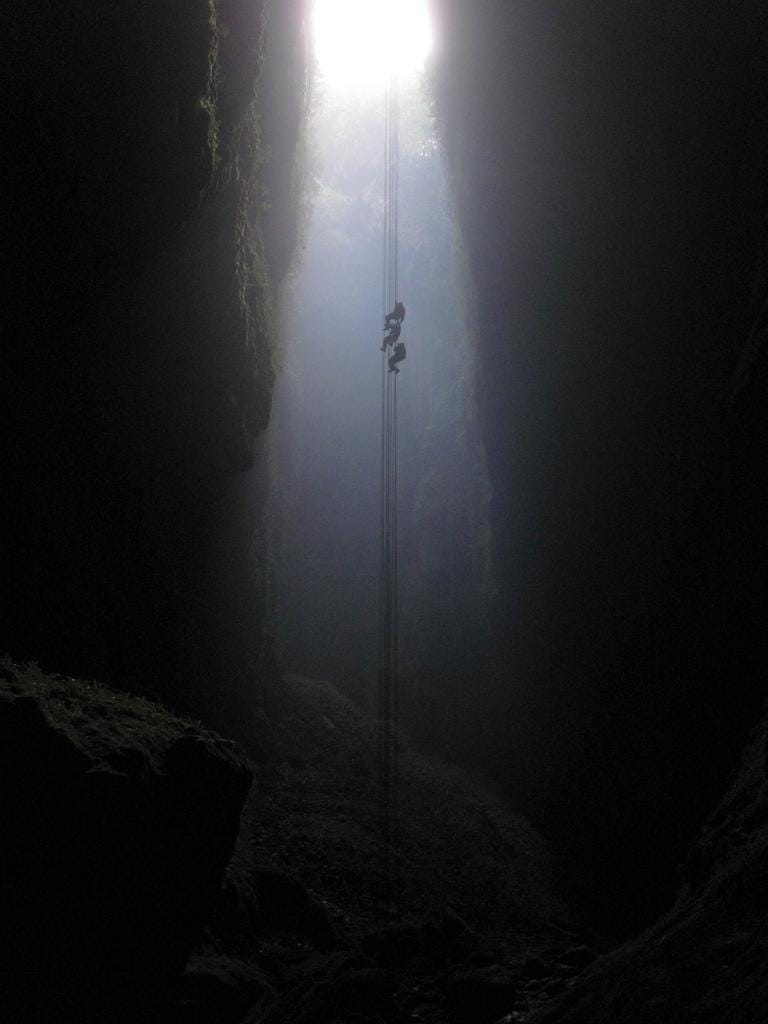
It’s a crummy, but inevitable, fate for anyone or anything tossed into your bottomless pit. There’s one more modification you can make, however, to solve this geophysical puzzle. Don’t toss something into an air-filled shaft passing through the Earth’s poles; toss it into a vacuum instead. If you can evacuate 100% of the air from inside this bottomless pit passing from pole-to-pole through the Earth, the only limit to your speed is set by the law of gravity, and this is something that physicists can calculate in an incredible, straightforward fashion.
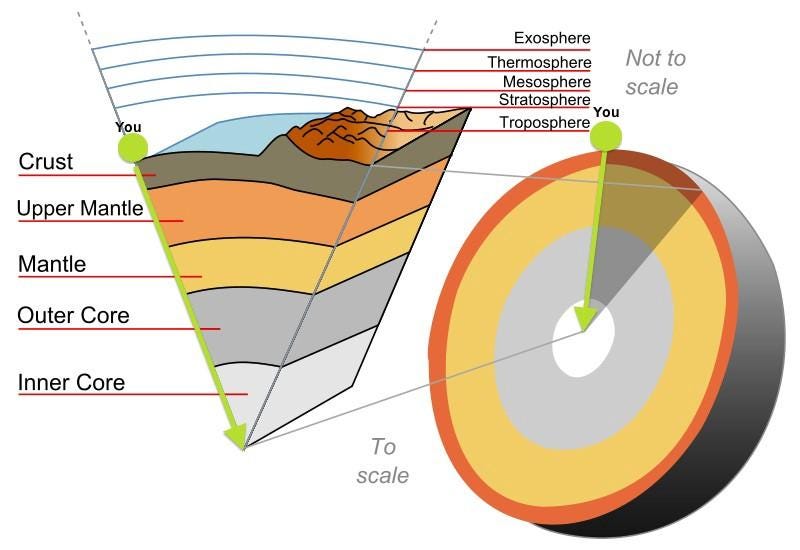
For one, you’ll never reach a terminal velocity. Whatever falls in will just keep on accelerating, reaching a maximum speed at the very center-of-Earth of over 11,000 meters-per-second, which is around 40,000 km/hr or 25,000 mph. The journey, through an airless shaft to the center of the Earth, only takes about 22 minutes, with some uncertainties in there based on the densities of different layers. In addition, because there’s no air resistance, no energy is lost.
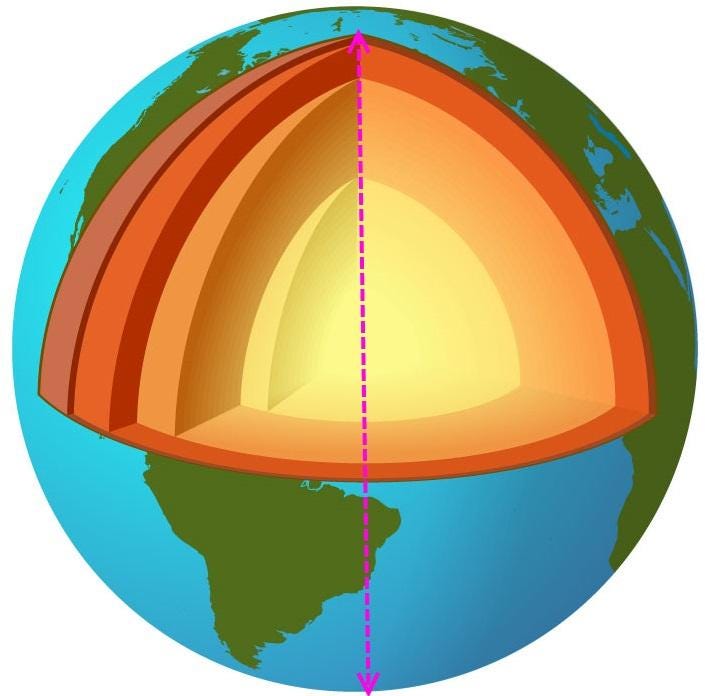
Once you passed through the Earth’s center at that blinding speed, you’d slow down as you progressively moved away from the Earth’s core and through the various outer layers. Your acceleration would change as you moved as well, dependent on the total mass enclosed by a sphere defined by your current distance from the Earth’s center, as well as that distance (squared) itself. After a total of 45 minutes after you were dropped into the shaft from the North Pole, you’d emerge from the South Pole.
Only, because the South Pole is at an elevation of around 2,800 meters (over 9,000 feet), you’d barely be able to see daylight overhead before you came to a halt, and then had the identical journey back from whence you came. And so you’d make a round-trip, back through all the various layers of mantle, outer core, and inner core, through the center of the Earth, and back once again through the northern layers. About an hour-and-a-half from when you first were dropped in at the North Pole, you’d re-emerge at the same exact position you began at.
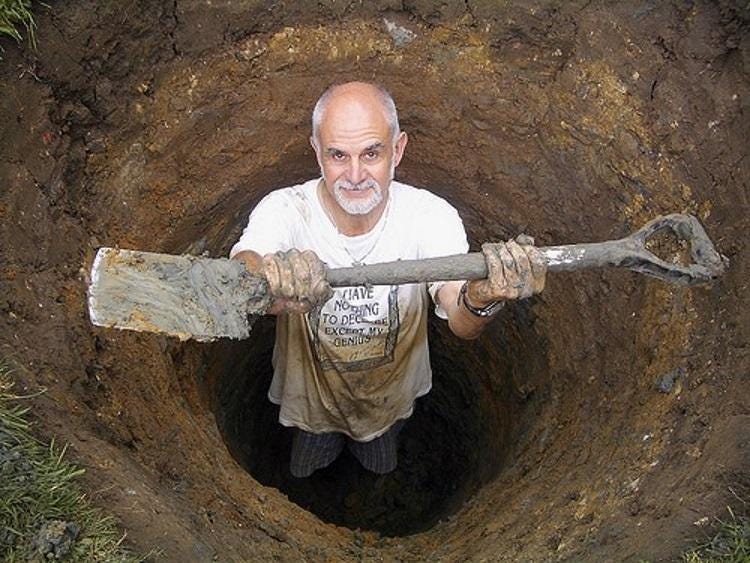
A round-trip journey, from the North Pole to just shy of the South Pole and back to the North Pole again, all through the Earth’s center, should take just a whisker under 90 minutes. Under ideal conditions:
- creating a vacuum,
- straight through the Earth’s rotational axis,
- starting with no tangential velocity,
- devoid of any type of air resistance and subject only to gravitational forces,
you’d wind up right back where you started just 90 minutes later: roughly the same time it takes the international space station to orbit the Earth. So long as you brought an oxygen supply with you, you’d be no worse for the wear. If you go, just remember to insulate yourself from the radioactivity and temperature changes along the Earth’s interior!
Ethan Siegel is the author of Beyond the Galaxy and Treknology. You can pre-order his third book, currently in development: the Encyclopaedia Cosmologica.




